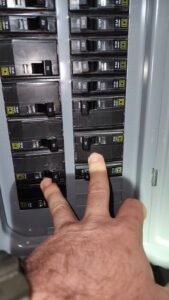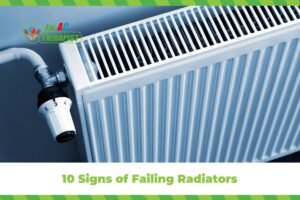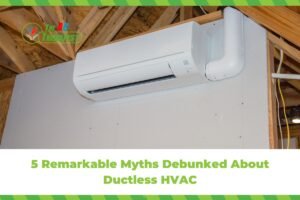Solve Blown Fuses in HVAC
Dealing with a blown fuse in your HVAC system can be a frustrating experience, especially during extreme weather conditions. This comprehensive guide aims to demystify the reasons behind blown fuses in HVAC systems, provide practical troubleshooting tips, and offer preventive measures to avoid future occurrences. Understanding these aspects can save you time, and money, and ensure your home remains comfortable year-round.
Understanding Blown Fuses in HVAC Systems
Understanding blown fuses in HVAC systems is crucial for maintaining the efficiency and safety of your heating, ventilation, and air conditioning unit. A blown fuse in an HVAC system is often a sign of an underlying issue that needs immediate attention. Here’s a detailed look into what causes blown fuses in HVAC systems and how they can be addressed.
What is a Fuse and Its Role in HVAC Systems?
A fuse is a safety device that protects against electrical overloads and short circuits. In HVAC systems, fuses are typically found in the circuit board within the air handler or the outdoor unit. They are designed to break the electrical circuit by melting an internal wire, known as the filament when the current exceeds safe levels. This break in the circuit prevents potential damage to the HVAC system and reduces the risk of electrical fires.
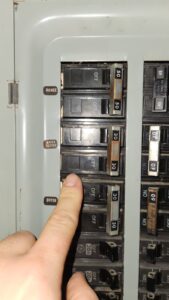
Types of fuses commonly used in HVAC units
In HVAC systems, fuses play a critical role in ensuring electrical safety and preventing damage to the system. There are several types of fuses commonly used in HVAC units, each designed for specific functions and electrical load capacities. Understanding these different types can help in identifying the right fuse for your system when replacements are needed. Here are the most common types:
1. Cartridge Fuses
- Description: Cartridge fuses are cylindrical in shape and encased in a glass or ceramic tube with metal end caps. They are known for their high ampere ratings.
- Usage in HVAC: Often used in central air conditioning units, these fuses protect the electrical circuits of the system from overcurrents.
2. Time-Delay Fuses
- Description: Also known as slow-blow fuses, they can handle temporary surges in current without blowing. They have a built-in delay that allows short-term overloads to pass without tripping.
- Usage in HVAC: Ideal for HVAC systems with motors that require a higher startup current, ensuring the fuse doesn’t blow during normal start-up surges.
3. Fast-Acting Fuses
- Description: These fuses blow quickly when the current exceeds the rated value. They lack the time-delay feature and respond immediately to overcurrent conditions.
- Usage in HVAC: Used in systems where immediate response is critical to protect sensitive components.
4. Glass Tube Fuses
- Description: These are simple, glass-encased fuses with metal caps on either end. The filament inside melts when the current exceeds the safe limit.
- Usage in HVAC: Commonly found in older or smaller HVAC units, they provide basic overcurrent protection.
5. Blade-Type Fuses (Automotive Fuses)
- Description: Compact and encased in plastic with two prongs, these fuses are similar to those used in automotive applications.
- Usage in HVAC: Sometimes used in smaller or portable HVAC units, they are easy to inspect and replace.
6. HRC (High Rupturing Capacity) Fuses
- Description: These fuses are designed to handle high current ruptures without the risk of explosion or fire. They are encased in a ceramic tube to safely contain any arc that forms when the fuse blows.
- Usage in HVAC: Suitable for larger commercial HVAC systems where high current capacity and safety are paramount.
7. Thermal Fuses
- Description: These fuses contain a small piece of metal that melts at a specific temperature, breaking the circuit.
- Usage in HVAC: Often used as a safety measure in HVAC systems to prevent overheating.
Selecting the Right Fuse
When replacing a fuse in an HVAC system, it’s crucial to select the right type and rating. Using an incorrect fuse can lead to inadequate protection or frequent blowing. Always refer to the HVAC system’s manual or consult with a professional to determine the appropriate fuse type and specifications for your specific unit.
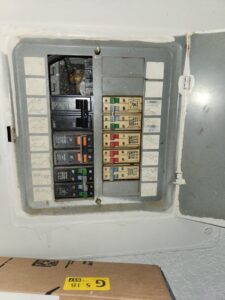
Common Reasons for Blown Fuses in HVAC Systems
- Electrical Overloads: If the HVAC system is working harder than usual due to clogged filters, blocked vents, or other issues, it can draw more power, leading to an overload and a blown fuse.
- Short Circuits: These occur when a wire carrying current touches another wire or part of the HVAC system, causing a surge in electrical flow that the fuse cannot handle.
- Aging HVAC Systems: Older systems may have worn-out components that malfunction, causing excessive power draw and blown fuses.
- Improper Installation: Incorrectly installed HVAC systems can lead to various electrical issues, including blown fuses.
- Faulty Components: Components like capacitors, motors, or compressors can fail and cause a fuse to blow.
- Power Surges: External power surges from lightning strikes or grid issues can result in a sudden increase in electrical current, leading to blown fuses.
Diagnosing and Addressing the Issue
When a fuse blows in your HVAC system, it’s essential to understand that simply replacing the fuse might not solve the underlying problem. Here’s a step-by-step approach to diagnosing and addressing the issue:
- Safety First: Always turn off the power to the HVAC system before inspecting it.
- Inspect the HVAC System: Check for any visible signs of damage, wear, or tear in the components.
- Check for Obvious Triggers: Ensure that the filters are clean and the vents are unobstructed.
- Test Electrical Components: Components like capacitors, motors, and compressors should be tested for functionality.
- Look for Wiring Issues: Inspect the wiring for any signs of damage, wear, or improper connections.
- Replace the Fuse: Once the underlying issue is identified and fixed, replace the blown fuse with one of the same type and rating.
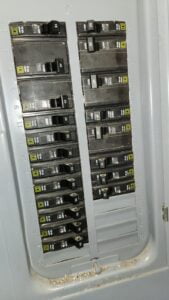
Troubleshooting Blown Fuses in HVAC Systems
Troubleshooting blown fuses in HVAC systems is a critical skill for homeowners and technicians alike, as it helps in quickly identifying and resolving issues that could lead to system failure or safety hazards. Here’s a step-by-step guide to effectively troubleshoot blown fuses in your HVAC system:
1. Safety First
- Power Off: Always start by turning off the power to the HVAC system at the breaker box to prevent electrical shock.
- Proper Tools: Ensure you have the necessary tools, like a multimeter, screwdrivers, and protective gloves.
2. Identify the Blown Fuse
- Locate the Fuse: Find the fuse box, usually located in or near the HVAC unit.
- Inspect Visually: Look for signs of a blown fuse – a broken filament in glass fuses or discoloration in ceramic ones.
- Test with a Multimeter: For a more accurate check, use a multimeter to test for continuity. A blown fuse will show no continuity.
3. Check for Obvious Causes
- Dirty Air Filters: Clogged filters can cause the system to overheat and blow a fuse.
- Blocked Vents: Ensure all vents are clear of obstruction for proper airflow.
- Physical Damage: Look for any visible signs of damage or wear on the HVAC unit.
4. Inspect Electrical Components
- Capacitors: These can fail due to age or power surges, leading to blown fuses.
- Wiring: Check for any loose, frayed, or corroded wires.
- Thermostat: A malfunctioning thermostat can cause short cycling, leading to fuse issues.
- Compressor and Motors: Overheating or malfunctioning motors and compressors are common culprits.
5. Replace the Fuse
- Correct Rating: Always replace the fuse with one of the same type and amperage rating.
- Test After Replacement: Power on the system to check if the new fuse holds.
6. Further Diagnosis
- Cycle the System: Run the system through a full cycle to check for any unusual noises or behaviors.
- Monitor Performance: Observe the system over a few days to ensure the issue is resolved.
When to Call a Professional
1. Recurring Fuse Issues
- If fuses in your HVAC system continue to blow after being replaced, it’s a sign of an underlying problem that requires professional diagnosis. Recurring issues could be due to electrical faults, component failures, or other complex problems.
2. Lack of HVAC Knowledge or Experience
- If you’re unsure about how to troubleshoot or resolve an issue safely, it’s best to call a professional. HVAC systems are complex and require a certain level of expertise, especially when dealing with electrical components.
3. Complex System Faults
- Some HVAC problems are beyond basic troubleshooting, such as issues with the compressor, motor, or internal electrical faults. These require specialized diagnostic tools and expertise.
4. Safety Concerns
- If there’s any risk of electrical shock, gas leaks, or other safety hazards, it’s crucial to stop any DIY attempts and contact a professional immediately. Safety should always be your top priority.
5. Post-Repair Performance Issues
- If your HVAC system isn’t performing efficiently or as expected after a DIY repair, it might be time to get a professional assessment. This includes issues like unusual noises, short cycling, or inadequate heating/cooling.
6. System Upgrades or Replacements
- Installing a new HVAC system or upgrading major components isn’t a typical DIY job. Professionals ensure correct installation, which is vital for the system’s efficiency and lifespan.
Preventing Future Blown Fuses
1. Regular Maintenance
- Scheduled Inspections: Have your HVAC system inspected by a professional at least once a year. They can identify and fix potential issues before they lead to blown fuses.
- Clean or Replace Air Filters: Dirty air filters can restrict airflow, causing the system to work harder and potentially overheat. Clean or replace filters regularly, typically every 1-3 months.
2. Proper System Usage
- Avoid Overloading: Don’t overload your system by setting unrealistic temperatures. Keep your thermostat settings within a reasonable range.
- Thermostat Management: Consider upgrading to a smart thermostat for more efficient temperature management and system monitoring.
3. Check and Upgrade Electrical Components
- Electrical Inspection: Have an electrician inspect your home’s electrical system to ensure it can handle the HVAC system’s load.
- Surge Protection: Install surge protectors to safeguard your HVAC system from power surges that can cause blown fuses.
4. Ensure Proper Installation
- If you’re installing a new system or making significant changes, ensure it’s done by a qualified professional. Improper installation can lead to numerous problems, including blown fuses.
5. Address System Overloads Promptly
- If your system trips a breaker or blows a fuse, investigate the cause immediately. Overloads can be a sign of a serious issue, such as a short circuit or an overworked motor.
6. Upgrade Older Systems
- Older HVAC systems may not be as efficient and could be more prone to issues like blown fuses. Consider upgrading to a newer, more efficient model.
7. Educate Yourself and your Household Members
- Understanding how your HVAC system works and educating your family about proper usage can prevent unnecessary strain on the system.
8. Monitor System Performance
- Keep an eye (and ear) out for any unusual signs from your HVAC system, like strange noises, smells, or inconsistent performance. These could be early warnings of issues that might lead to blown fuses.
9. Invest in a Maintenance Plan
- Consider investing in a maintenance plan, like the Therapy Maintenance Plans offered by The AC Therapist. Regular professional maintenance can catch issues early and keep your system running smoothly.
Advanced Tips and Tricks
Dealing with blown fuses in your HVAC system can be challenging. While basic troubleshooting might solve some issues, advanced tips and tricks can help you better understand, prevent, and manage blown fuses more effectively. Here are some advanced strategies:
1. Understand Your HVAC Electrical Load
- Calculate Load: Learn to calculate the electrical load of your HVAC system. This helps in understanding if your current electrical system can handle the load or if it’s causing fuses to blow.
- Monitor Power Fluctuations: Use a monitoring device to track power fluctuations that could lead to blown fuses.
2. Upgrade Fuse Technology
- Time-Delay Fuses: Consider using time-delay fuses for systems with motors that momentarily draw extra current when starting up.
- Circuit Breaker Upgrade: In some cases, upgrading from fuses to circuit breakers can offer better protection and easier reset options.
3. Regularly Inspect and Tighten Electrical Connections
- Tighten Connections: Loose electrical connections can cause overheating and blown fuses. Regularly inspect and tighten all connections.
- Corrosion Check: Check for and clean any corrosion on connections, as this can cause increased resistance and heat.
4. Implement a Surge Protection System
- Whole-Home Surge Protectors: Install a whole-home surge protection system to protect your HVAC and other home appliances from power surges that can cause fuses to blow.
5. Use Advanced Diagnostic Tools
- Infrared Thermography: Use infrared cameras to detect hot spots in your electrical system, which can be a precursor to electrical failures.
- Multimeter Testing: Regularly test components with a multimeter to ensure they are operating within normal ranges.
6. Optimize Air Flow
- Ductwork Assessment: Ensure that your ductwork is properly sized and free of leaks. Restricted airflow can cause your system to overwork and increase the risk of blown fuses.
- Ventilation Check: Make sure all vents and registers are open and unobstructed.
7. Component-Specific Checks
- Capacitor Health: Regularly check the health of capacitors, as a failing capacitor can cause motors to draw more power, leading to blown fuses.
- Motor Efficiency: Ensure that blower and condenser fan motors are running efficiently and not drawing excessive current.
8. Environmental Considerations
- Temperature Management: Ensure the environment around the HVAC unit is not too hot, as excessive ambient temperatures can stress the system.
- Protection from Elements: If the unit is outside, make sure it’s protected from direct sun, rain, and debris.
9. Professional Calibration
- System Calibration: Have a professional calibrate your system regularly. This ensures that all components are working harmoniously and not overloading the electrical system.
10. Educate Yourself
- Stay Informed: Keep up with the latest HVAC technologies and best practices. Understanding the nuances of your system can help you prevent issues related to blown fuses.
Mastering the Mystery of Blown Fuses in HVAC Systems: Insights from The AC Therapist
At The AC Therapist, we understand how challenging and inconvenient it can be to deal with blown fuses in your HVAC system. That’s why we’re committed to not only providing swift and effective solutions but also empowering you with the knowledge to understand and prevent such issues in the future. Regular maintenance, proper system usage, and timely upgrades are crucial in ensuring the health and efficiency of your HVAC unit. If you find yourself facing recurrent fuse problems or complex system issues, remember, The AC Therapist is here to help.
Our team of skilled professionals in the Tampa Bay area is equipped with the expertise and tools to diagnose, repair, and maintain your HVAC system, ensuring optimal performance and comfort in your home or business. Trust us to be your reliable partner in maintaining a perfect climate, offering peace of mind and the highest standard of service. Your comfort is our priority, and we’re here to ensure your HVAC system runs smoothly, efficiently, and reliably.


